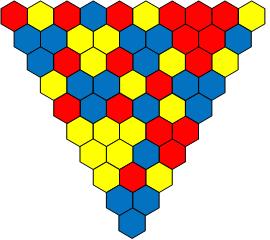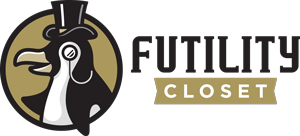
Make an inverted triangle of hexagonal cells with side length 3n + 1, and color the cells in the top row randomly in three colors. Now color the cells in the second row according to these rules:
- If the neighboring cells immediately above are of the same color, assign that color.
- If they’re of different colors, assign the third color.
When you’ve finished the second row, continue through the succeeding ones, applying the same rules. Pleasingly, no matter how large the triangle, the color of the last cell can be predicted at the start: Just apply our two guiding rules to the endmost cells in the top row. If those two cells are both red, the last cell will be red. If one is red and one is yellow (as in the figure above), the bottom cell will be blue.
The principle was discovered by Newcastle University mathematician Steve Humble in 2012. Gary Antonick gives more background here, and see the paper below for a mathematical discussion by Humble and Ehrhard Behrends.
(Ehrhard Behrends and Steve Humble, “Triangle Mysteries,” Mathematical Intelligencer 35:2 [June 2013], 10-15.)
